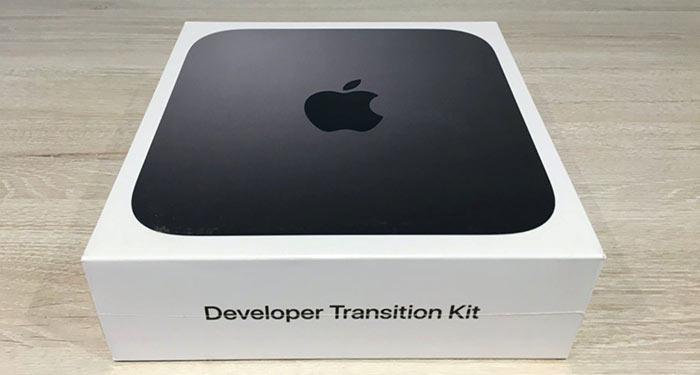In 2020, Apple made a groundbreaking announcement: it would transition its entire Mac lineup from Intel processors to its own custom Apple Silicon chips. As part of this ambitious shift, Apple provided developers with the Mac Mini Developer Transition Kit (DTK), a crucial tool to ensure a smooth transition for applications and software. This blog post delves into what the Mac Mini DTK was, its significance, and its impact on the development community. As an iOS developer, I had the unique opportunity to be part of this program and work with the Mac Mini DTK firsthand.

What Was the Mac Mini DTK?
The Mac Mini DTK was a specially configured Mac Mini designed to help developers transition their applications to run on Apple Silicon. Unlike regular Mac Minis, the DTK was powered by the A12Z Bionic chip, which was also used in the 2020 iPad Pro.
Specifications
The key specifications of the Mac Mini DTK included:
- Processor: A12Z Bionic
- Memory: 16GB RAM
- Storage: 512GB SSD
- Operating System: macOS Big Sur (beta)
Purpose
The primary goal of the Mac Mini DTK was to allow developers to prepare their applications for the upcoming Apple Silicon Macs. By providing early access to this hardware, Apple aimed to ensure that developers could optimize their apps for the new architecture, ultimately leading to a seamless transition for end users.
Significance of the Mac Mini DTK
The Mac Mini DTK played a pivotal role in Apple's transition to Apple Silicon for several reasons:
Early Access for Developers
Developers received early access to the hardware and software environment of Apple Silicon, enabling them to start optimizing their applications well before the consumer launch. This head start was critical in ensuring that a wide range of apps would be ready and fully optimized when Apple Silicon Macs became available to the public.
Performance Insights
The DTK provided valuable insights into the performance and capabilities of Apple Silicon. Developers could experience firsthand the enhancements in speed, efficiency, and power consumption. These insights helped in making necessary adjustments to applications to leverage the full potential of the new architecture.
Compatibility Testing
One of the main uses of the DTK was to test application compatibility. Thanks to Rosetta 2, most existing Intel-based applications could run on Apple Silicon with little to no modifications. However, the DTK allowed developers to recompile and optimize their applications natively for the new architecture, ensuring optimal performance.
Community and Collaboration
The transition to Apple Silicon fostered a collaborative environment among developers. Through forums, online communities, and direct support from Apple engineers, developers could share experiences, troubleshoot issues, and exchange best practices for optimizing applications for Apple Silicon.
Impact on the Development Community
The Mac Mini DTK had a profound impact on the development community, setting the stage for the successful launch of Apple Silicon Macs. It facilitated:
Smooth Transition: By enabling developers to prepare in advance, the DTK ensured a wide range of applications were ready and optimized for Apple Silicon at launch.
Enhanced Performance: Developers could fine-tune their applications to take full advantage of the performance and efficiency improvements offered by Apple Silicon.
Innovation: Early access to Apple Silicon inspired new innovations and optimizations, leading to better, more efficient applications for end users.
Personal Experience
As an iOS developer since 2008, being part of the Mac Mini DTK program was a remarkable experience. Working with the DTK allowed me to prepare my applications for the new Apple Silicon architecture and gain a deeper understanding of the capabilities of these new chips. The support from Apple and the collaborative spirit within the developer community made this transition both exciting and educational.
The Mac Mini Developer Transition Kit was a crucial element in Apple's transition to Apple Silicon. By providing developers with early access to this hardware, Apple ensured that the software ecosystem would be ready to support the new architecture from day one. The DTK not only helped developers optimize their applications but also offered a glimpse into the future of Mac computing, characterized by improved performance and efficiency. This successful transition has set the stage for continued innovation and advancement in the Apple ecosystem.
Need Help With Your Streaming Project?
This article was written by experienced professionals available through iReplay.tv. Whether you need expertise in silicon apple arm iPadOS developer senior developers—our network of specialists can bring your project to life.
Hire a Professional →